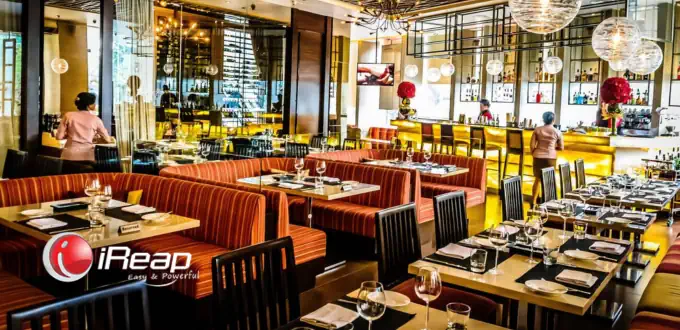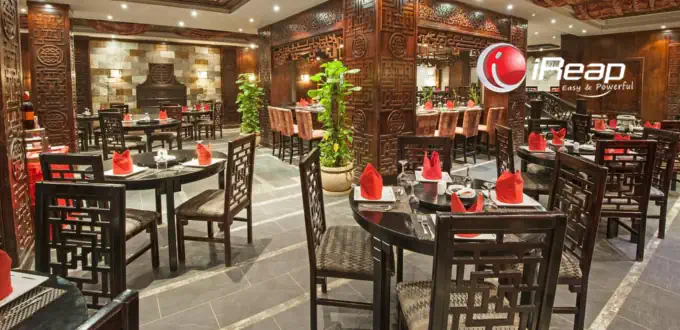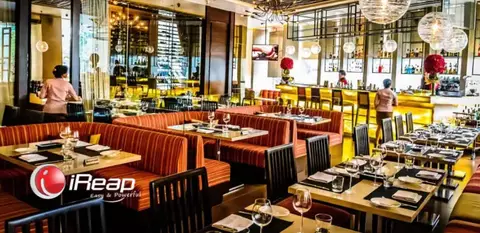
To this day, the restaurant business continues to offer promising profits—provided it is managed with professionalism. Are you planning to start a restaurant venture? If so, begin by understanding what defines a restaurant, its categories, the different types of dining establishments, and the various payment systems used in the industry, all of which will be explored in this iReap POS article.
Four Popular and Profitable Types of Restaurants
Before opening a restaurant, it is wise to determine the specific type of establishment you intend to operate. There are nine distinct types, categorized by ambiance, cuisine, and serving style. Among them are:
1. À la Carte Restaurants
An à la carte restaurant allows guests to order individual dishes and beverages from a menu, each priced separately. This gives customers the freedom to choose meals according to their taste and budget.
Typically, guests enter the restaurant, select a table, and are then approached by a server who takes their order. Once the food is ready, the server returns to deliver the dishes and beverages to the table.
2. Buffet Restaurants
At first glance, buffet restaurants resemble all-you-can-eat establishments. Guests pay a fixed price per person and may then enjoy unlimited access to the array of dishes provided.
After payment, customers may choose their seats and freely help themselves to a wide selection of food and beverages—ranging from appetizers and main courses to snacks, vegetables, fruit, and a variety of drinks.
The key difference from an all-you-can-eat restaurant lies in the additional service. In all-you-can-eat dining, servers take custom orders and deliver them to the table. In buffet restaurants, this service is typically not provided.
3. Family-Style Restaurants
Family-style restaurants feature large tables that can accommodate 8–10 guests. These establishments are designed to serve families, colleagues, or large groups who prefer dining together.
A hallmark of this style is the communal serving method—dishes arrive in large bowls or platters meant for sharing, creating a warm and convivial dining experience.
Portion sizes may sometimes be adjusted according to the number of diners, depending on the restaurant’s policy.

4. Casual Style Dining
If you envision a restaurant that serves not only as a place to eat but also as a relaxed gathering space for events or leisurely conversations, then a casual style dining concept may be ideal.
Casual dining restaurants offer an easygoing atmosphere and meals at moderate prices. Customers may visit without reservations during operating hours, and the menu typically lists a wide variety of options.
To attract specific customer segments, owners often choose a thematic style—such as Italian, Chinese food, Korean barbecue, seafood, or coffee-and-meal concepts. Ideally, the interior ambience should reflect the chosen theme.
Common Payment Systems Used in Restaurants
To elevate customer experience and simplify transactions, restaurants typically provide several payment options:
1. Cash Payments
This is the most traditional method, still preferred by many customers. Therefore, it remains essential for restaurants to accept cash.
2. Credit/Debit Cards
Card payments are widely used in restaurants. Many customers opt for debit or credit card transactions to benefit from promotional discounts offered by issuing banks.
To support this method, restaurants require a payment terminal and a Bluetooth printer to print receipts.

3. Digital Payments
Digital wallets—such as Gopay, OVO, and DANA—have grown increasingly popular, particularly among Millennials and Gen Z, thanks to their convenience.
Customers simply scan a QR code to instantly complete their payment according to the amount displayed in the app.
4. QRIS
The Quick Response Code Indonesian Standard (QRIS) is an electronic payment system that utilizes QR technology. It integrates not only with digital wallets but also directly with bank accounts, credit cards, and debit cards.
5. Point of Sale (POS) System
A Point of Sale (POS) system is another essential tool that streamlines restaurant payment processing.
Advantages of a POS system include:
- Flexibility in accepting multiple payment methods.
- Enhanced efficiency and faster customer service.
- Reduced human error in generating receipts, calculating totals, and processing payments.
- Accurate transaction records and automatically updated real-time financial reports.
One of the best POS applications available is iReap POS. With this Android-based cashier app, you can also manage inventory, track stock, and run loyalty programs.
Using a POS system is not merely a way to simplify payment transactions—it serves as an operational backbone that helps your restaurant run more smoothly. Download the app now and experience the benefits yourself by clicking the banner below:
Now you have a clearer understanding of what defines a restaurant, the various types available, and the payment systems most commonly used. For further insights into restaurant operations, explore Popular Japanese Restaurants and Sample Menus in Indonesia and Effective Strategies to Make Your Restaurant Thrive.



